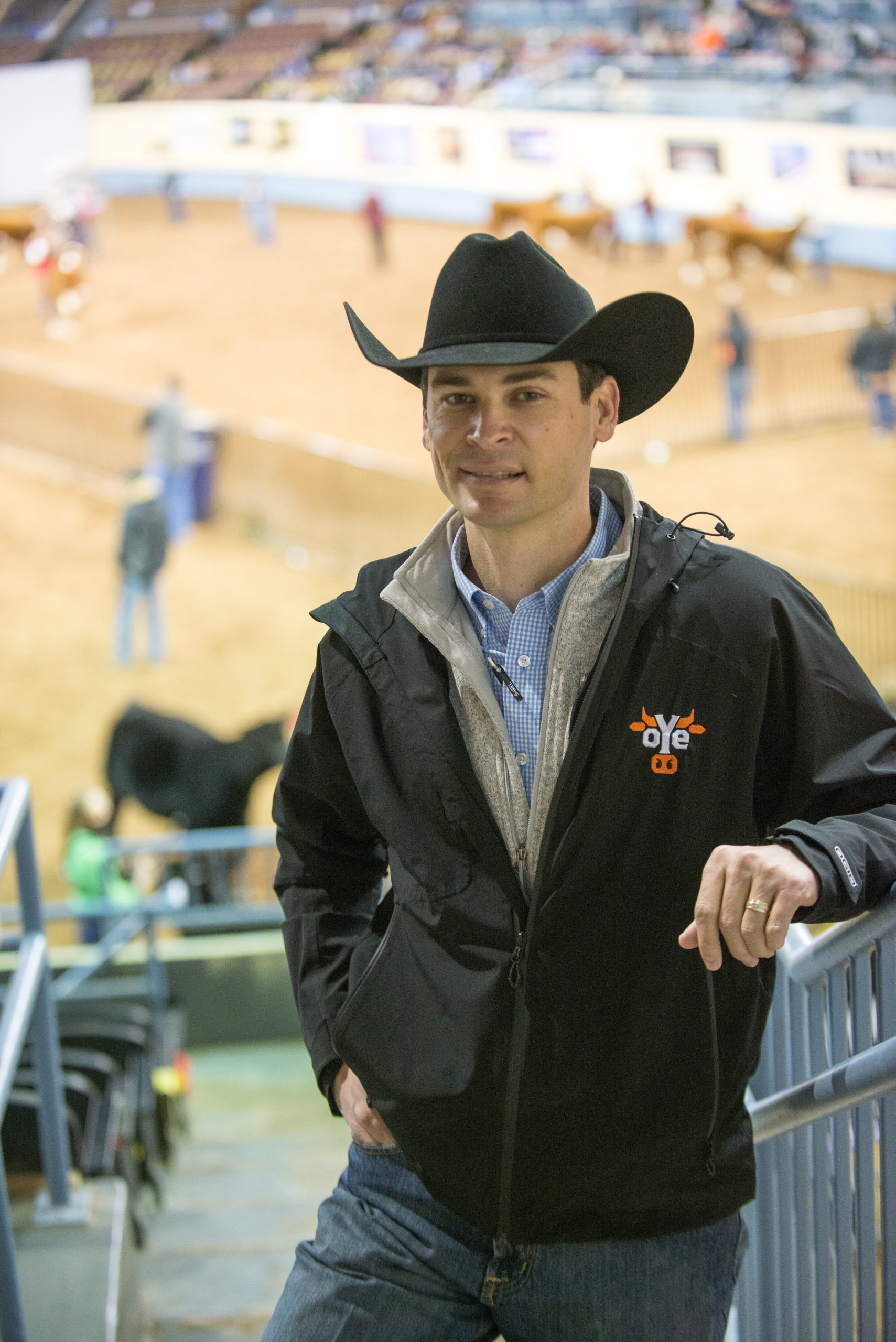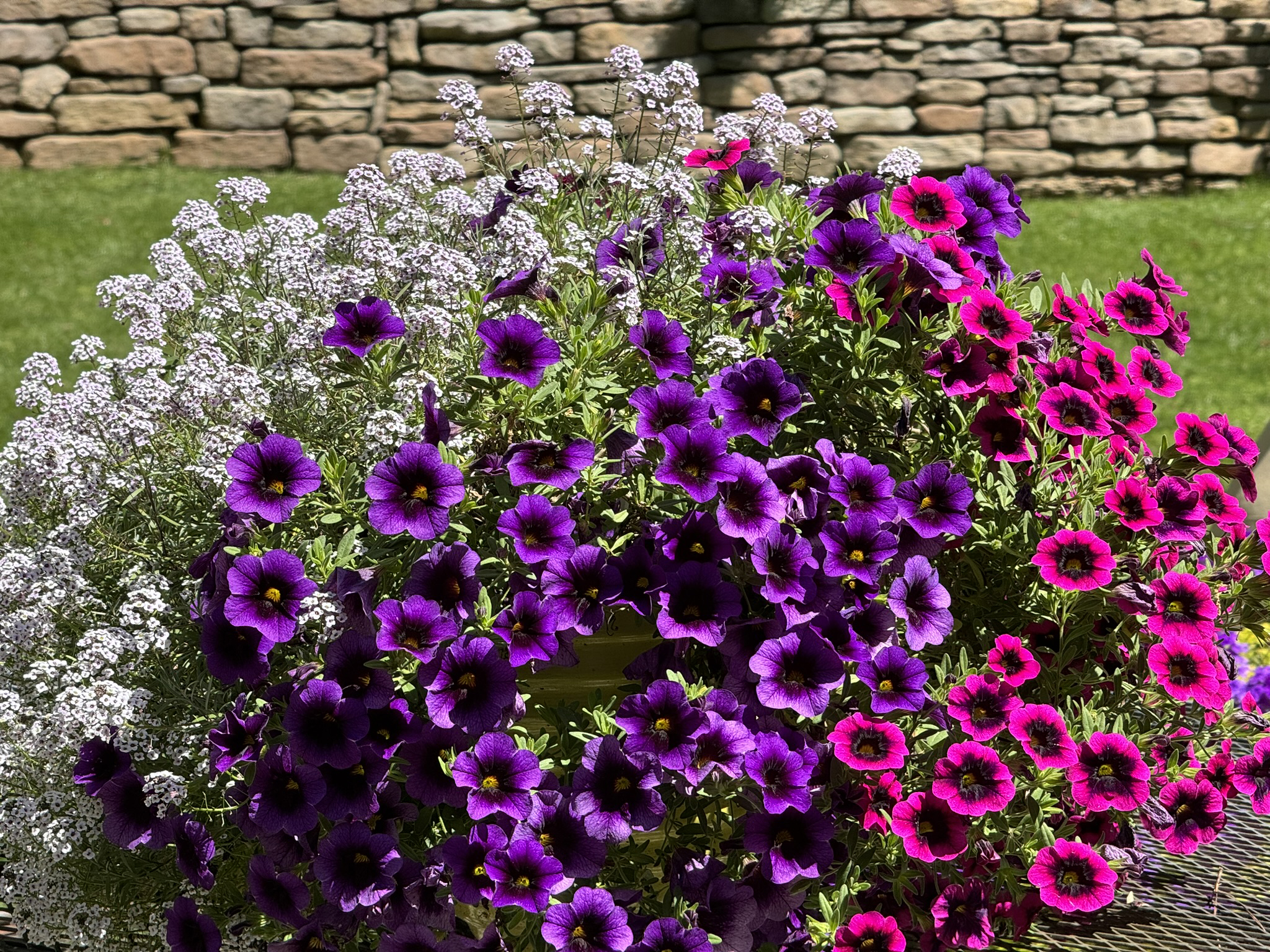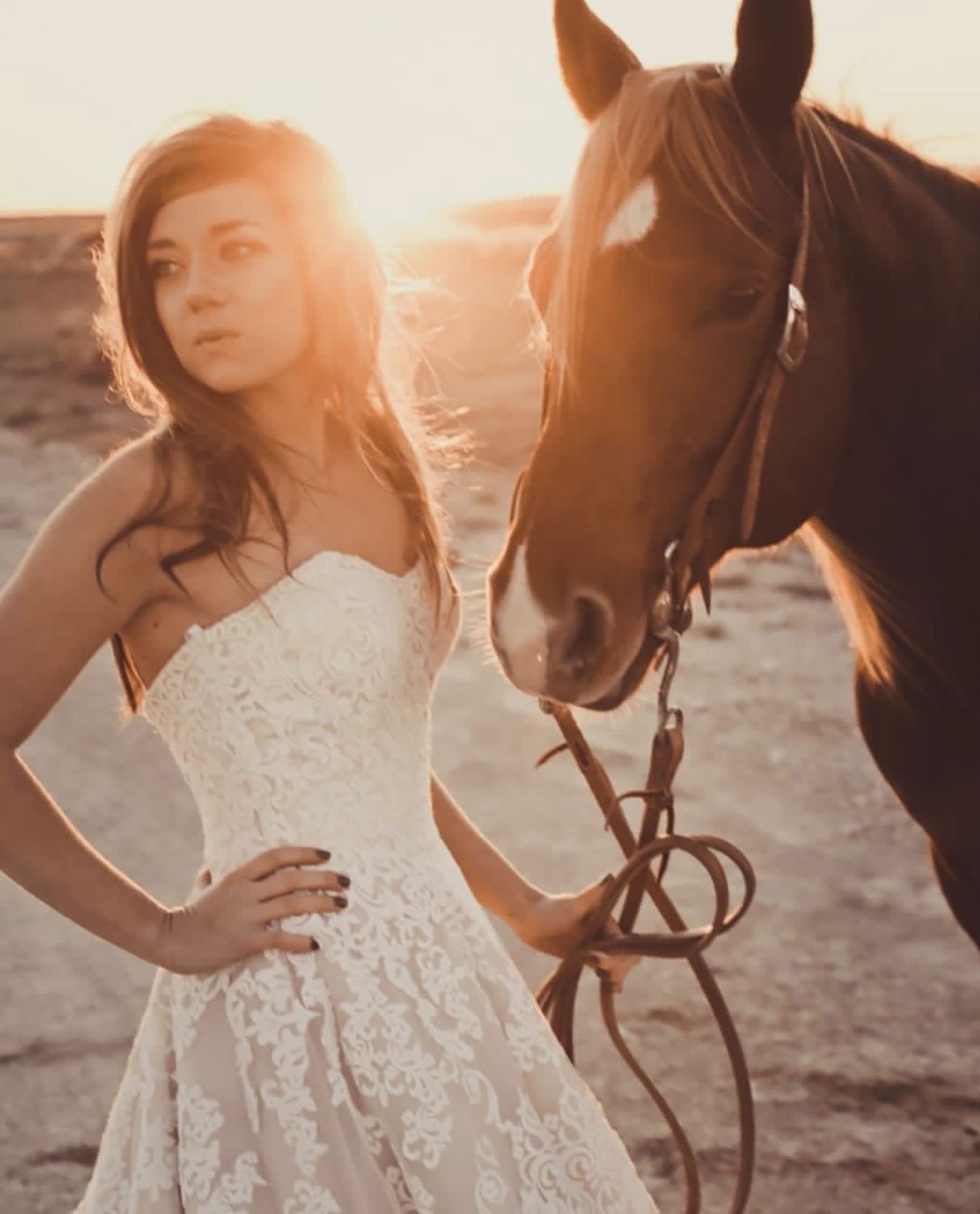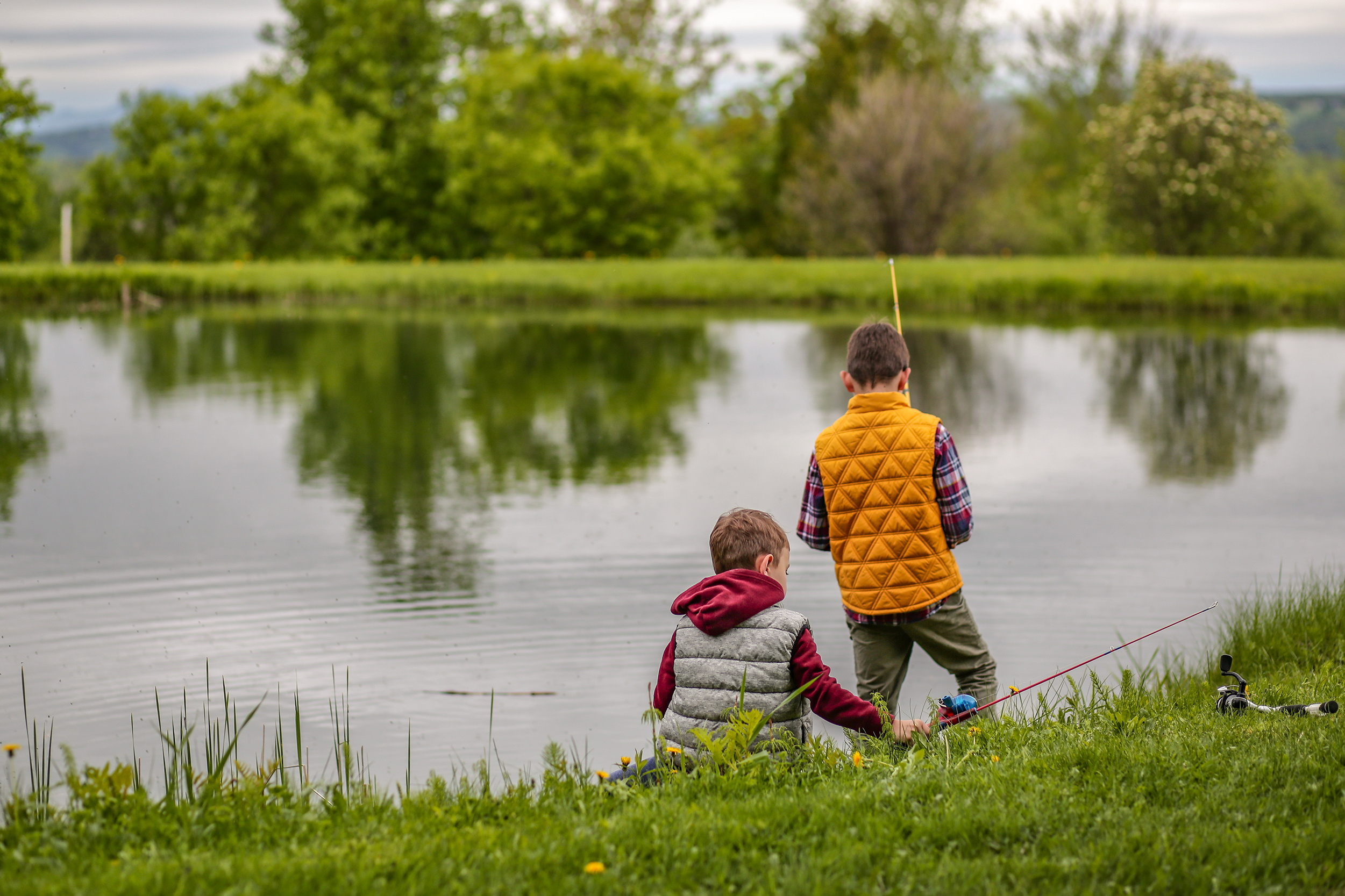Country Lifestyle
Tyler Norvell – OYE President

He said it was the job he always wanted, and now, as Tyler Norvell ends his first decade at the reins of the Oklahoma Youth Expo, he’s proud of the work he, the OYE Board of Directors, and staff have accomplished.
Practically every man, woman, student, or child involved in agriculture in the state of Oklahoma knows about OYE. The annual livestock show, held in March at the Oklahoma State Fairgrounds in Oklahoma City, annually draws participants from every single one of the state’s 77 counties.
Despite a tumultuous 2020, which resulted in a devastating shutdown half-way through the event, the future looks bright for 2020. With a pandemic still terrorizing the country, Norvell and team are ready to produce the Greatest Show.
Norvell grew up in Amber, Okla., as the son of a dairyman, putting in long hours on the dairy farm. “To this day I joke that the best day of my life was when I was 13 years old and he sold it,” he shared. “But it taught me how to work.”
While out of the dairy business, Norvel kept busy, as both his grandfathers farmed everything from cotton to alfalfa, and also raised cattle. He worked every summer and through the winters, farming and ranching his whole life. It’s not surprising that he was involved in showing livestock from the moment he was old enough until the day he graduated. “I wouldn’t be where I am today without showing, FFA, and my ag teacher, Billy Scott, who I think the world of,” he recalled.
After graduation, Norvell attended Butler County Community College in Kansas on a livestock judging scholarship for a couple years before transferring to Oklahoma State University. It was there, in 2005, that he and his livestock judging team won a National Championship.
Just after that win he got a call that would shape the course of his career. Norvell’s girlfriend, and now wife, Beth, worked with the late Justin Whitefield, who was the OYE Executive Director. Whitefield had ties to Oklahoma Farm Bureau, and knew they were looking for a lobbyist; specifically, someone that had actual hands-on agriculture experience.
“I was just a 21-year-old kid at the time, and this unexpectedly came up. I interviewed with them, and they hired me. I was working full time lobbying for Oklahoma Farm Bureau and going to college for my last semester,” he shared.
From 2005 through 2012, Norvell worked through the ranks at Oklahoma Farm Bureau, rising to the rank of the Vice President of Government Affairs.
Then opportunity arose. “I always said the only job I’d ever leave Oklahoma Farm Bureau for was OYE,” he shared. “I had looked up to Justin and seen what he had done to get the organization moving in the right direction, and how much he had improved the event from the time I had shown in it.
“The actual livestock show has been going on for 106 years, but OYE, the non-profit, wasn’t formed until 2002. That first year, there was one $1,000 scholarship awarded and the premium sale grossed $300,000. Justin passed away in 2006, but he had started it on the path to be very successful. In 2019 (because there was no premium sale in 2020), the premium sale grossed $1.3 million and we presented more than $350,000 in scholarships.”
He added, “I wanted to go out and get it right. I believe in the program, and what Justin was doing for kids in both urban and rural Oklahoma, and I thought it would be a neat opportunity to give back. I love doing what I get to do.”
When Norvell started at OYE, his responsibilities were broad. A smaller staff meant that he could be found daily handling several parts of the organization, from directing people coming in with livestock at the event to fundraising. “Whatever had to be done, I would do. Now we have a few more staff members, and my main job is to oversee operations and all the fundraising,” he explained.
Funds are an integral part of any non-profit, and with an eye to the future, Norvell made one of his first priorities ensuring the legacy of Oklahoma Youth Expo.
“When I interviewed for the job, I met with Mr. Bob Funk, our Chairman, and Mr. Jimmy Harrel, our Vice Chairman. I told them I was on board, as long as they stayed involved. About a year later, I went to Mr. Funk and said, ‘You know, when you and Mr. Harrel are gone, I want to make sure this thing lives on forever. If we can make sure we have our operating expenses covered and the facility to put it on, we can ensure that.’ And Mr. Funk said he thought it was a great idea,” Norvell recalled.
A year later, Funk announced his legacy gift, a $5 million testamentary challenge match for all gifts to OYE Onward. Every campaign gift, regardless of size or type, is matched dollar-to-dollar by Mr. Funk, up to $5 million.
“To date we have raised $2.5 million to match his $5 million, and matching his gift completely has been our goal from the start. This program is extremely important to me. I grew up showing every year that I could, my girls are involved with it. I haven’t missed an Oklahoma Youth Expo since I was eight years old, and it means the world to me and my family and friends.” He added, “We had to make sure that his program will live forever to give every Oklahoma youth the same opportunity the youth of the last 106 years have had.”
Contributing to the Onward Campaign is simple, and more information can be found at https://okyouthexpo.com/onward-campaign/
OYE 2020
“If we had known in 2020 what we know now, I believe we could have finished our show. We just had no idea what would happen,” Norvell says, reflecting on the March Sunday when he had to announce that the event, not even half-way completed, would be immediately shut down.
The 10 day event was predicted to have more than 22,000 animals as well as 7,000 exhibitors and family members on the fairgrounds during the event. Norvell and his staff were in constant contact with the department of health, monitoring the situation. Just days before the start of the event, the first COVID-19 case was diagnosed in Oklahoma.
The event felt like a time-bomb. “I tell people it felt like those first five days of the event took five years. It felt like they took forever. Halfway through we called an audible, and decided to shorten the event to get people home quicker,” Norvell recalled.
With that decision made on Saturday, March 14, shoulders relaxed and tensions lessoned. “We got that done and then felt confident we would be able to finish the show,” he said.
Just 24 hours later, all that changed. A health emergency was declared in Oklahoma County, and the event was shut down. Youth exhibitors and their parents were devastated, tears flowing, as the facility and event shut down.
“It was horrible. We were watching the kids and parents mourn. I had a good friend tell me, ‘Tyler, it’s like they were mourning an unexpected death because there was no closure.’ Of course we know that it’s not anywhere the same as death, but they did not have the closure of more than a year’s work of worth. They didn’t get a chance to see their hard work through,” he said.
Norvell was dealt a double-dose of grief. In addition to dealing with the aftermath as the event’s producer, the cancelation hit much closer to home. “My daughter didn’t get to show her pigs, and so it was tough to wear both hats, but it helped me understand just how hard it was on the families and to experience it first-hand,” he said.
Norvell, the OYE Board of Directors, and staff went to work. Immediately they announced that any 2020 senior who had a market animal (breeding animals had already been shown when the event shut down) would be eligible to show again in 2021.
Next was a goal to raise $100,000 for hardship scholarships for 2020 seniors. “We said anyone who was a 2020 senior that did not get an academic scholarship should apply to get $1,000. We had 116 kids apply for those, so we raised another $16,000 so that every applicant got a scholarship,” Norvell said.
Lastly, OYE refunded anyone that had a market animal entered that didn’t get to show it.
Country Lifestyle
Superbells Blackcurrant Punch

Rare Color for Baskets and Mixed Containers
By Norman Winter | Horticulturist Author and Speaker
The Garden Guy has become completely mesmerized by a bowl of blackcurrants. You can guess I am having a little fun with you. I am not talking about the fruit but the flowers referred to as Superbells Blackcurrant Punch.
This year most everything came through the winter including a few plants I am even asking where did you come from? The spring has been long, gloriously beautiful and still in progress and all of the Superbells calibrachoas taking your breath away with their beauty.
I have written about the ‘Punch Group’ but never about a single color. I love every one of them but this year I just have to dedicate a column to Superbells Blackcurrant Punch. Yes, I do have a couple of yellow bowls where they are showing out but in reality, they are mixed in a lot of my containers.
Superbells Blackcurrant Punch has won a ‘baker’s dozen’ of awards, Top Performers, and Perfect Scores north to south and east to west. Like the others they reach about 12-inches tall with up to a 2-foot spread. They obviously have some cold tolerance as mine have come through the winter. The caveat is they did spend five consecutive nights in the garage. Their beauty in March and April has defied logic.
The color which is so rare in the garden makes it a must have plant. I found a Proven Winners description from several years ago that nails it, Superbells Blackcurrant Punch has bright fuchsia-colored petals with velvety black centers and a subtle yellow in the throat. It will be hard to pass by if you are lucky enough to find them at the garden center.
Your success will come from growing them in containers with a very good potting soil. Give them plenty of sun. There is a lot of garden gossip that says you can’t grow them with Supertunias, Superbenas or a plethora of other plants because of different water requirements.
In the South we water containers and baskets every day unless we get rain. These containers drain freely so life is the same for all the plants. Since we water so frequently, we need to feed on a regular basis. The Garden Guy mixes up the blue water-soluble mix and feeds the container grown plants about every three weeks. At some point the Superbells Blackcurrant Punch will look tired and in need of a trim. This haircut so to speak will generate new growth, and blooms for the fall.
Your choice of partners is only limited by your imagination. I love them with Lemon Coral sedum, Superbena Cobalt verbena, Blush Princess sweet alyssum and mixed with other calibrachoas like Superbells Grape Punch and Magic Pink Lemonade. They are heavenly with Primo Wild Rose heuchera and Superbena Whiteout verbena.
All of the Superbells attract both hummingbirds and butterflies. The butterflies I have photographed so far have all been Eastern Tiger Swallowtails. You have to admit that’s not bad for flowers that are so pretty. Planting season is here, keep a spot open in your mixed-container recipes for Superbells Black Currant Punch or some of the other Superbells calibrachoas that now total 41. Follow me on Facebook @NormanWinterTheGardenGuy for more photos and garden inspiration.
Country Lifestyle
Western Housewives – June 2024

Life consists of small events that define us. Sometimes, it’s something as simple as eating cake with your two-year-old at midnight at your sister’s wedding. Sometimes, it’s something as painful as taking your two-week-old to the emergency room with RSV and living there for a week. Both are moments that changed me, and both are moments that I’ll remember forever.
Often my defining moments have happened on the back of a horse. I guess that is because that is where I have spent most of my life. It has made me pay special attention to each horse I have ridden during different stages of my life.
My first horse was a big bay horse that was must have reminded me of Greek mythology because it took me about two seconds to name him “Hercules.” He was the perfect mount for a five-year-old that acted tough but was secretly scared of her own shadow. Once I got Hercules, I could start going to work with my dad. We gathered wheat pastures and road pens, and he let me sit in the round pen on Hercules while he worked his sale horses. At the ripe age of five I was a pretty seasoned pen rider and had the sour disposition to prove it.
One morning we had a lot of wheat pasture freshies to turn out. Naturally, they ran off as soon as they got off the truck. Babies cry, and wheat pasture cattle run off the truck; I don’t make the rules.
My Dad had to leave me and get in front of the herd to keep them from crashing into the fence. I’m sure he told me just to stay put, but Hercules got excited by all the commotion and started following the impending stampede. Now I realize that I was safe the entire time, but, at that moment, I was certain my life was over. I was dramatic even as a youngster. Would Hercules ever stop? Would he try and jump the sprinkler tracks? What if he runs through the hot wire? And most importantly, what will I tell my friends?
About the time I was ready to jump into the dirt my Dad ran up beside me and helped me stop Hercules. I was safe, my adrenaline was pumping and I was promised an Allsup’s Coke for all my troubles. That was a defining moment in my life. I realized the more danger you got yourself in to, the much bigger the condolence award. As long as I was able to keep it to an Allsup’s Coke level of danger I would be just fine.
The next horse I truly loved was named “Alotofbull” He was anything but full of bull. He was big, cowy, and athletic. He scared me just a little but that’s what made me love him the most. My Dad and I won countless events on Alotofbull. My Dad has true horsemanship pumping through his veins, but I can only credit my riding success to Alotofbull. He made things easy for me and I felt I was nothing without him.
Even after all the ribbons, the moment I remember the most about him wasn’t in the showpen. it was in the middle of nowhere on a place we called “The Cain.” The Cain was where I spent many fall afternoons and summer mornings. It was full of Sandhills, cactus that were found of my backside every time my seat left the saddle, and absolutely no sign of civilization. We would push cows to water, move pastures, and do other slow-paced things that were good for the horse and for the mind. I loved it there.
One afternoon in the middle of June, my Dad and I were moving some cattle to water. After we were done we came upon a set of old pens that my Dad had branded calves in with his Dad a long time ago. My Dad got quiet and solemn. Traits that were unusual for him. He started to reminisce of times long ago and told me how much he wished all his kids had gotten to know his Dad before he had passed away many years prior. I was only 14 at the time, and I was having trouble holding back tears myself. I leaned forward and played with Alotofbull’s black mane. I knew my grandfather had been a special man and I knew my Dad had cherished him. It made me see my Dad in a different light going forward. Yes, he was strong and resilient, but he was also human, just like the rest of us. He had a vulnerability in his life, too. It was a moment that taught me not to be afraid to talk about the hard stuff but to always press on. No matter what.
Many years later, I found myself in beautiful Oklahoma on a horse named “Reuben.” He was my then-boyfriend’s horse and was the only quick and little horse I had ever ridden. He was spunky and made me feel like better help than I was as we gathered pairs to wean that morning.
The sun was just coming up over the cottonwood trees, making the dewy grass shine. I looked over at the man beside me and just knew I would spend the rest of my life doing this very thing with him. I didn’t care if we ever had money or much of anything, really. As long as we were together, loving God, and riding good horses, I didn’t care about anything else.
About 12 hours later, after a long day and a few incidents that may or may not have involved me getting run over by a yearling, that same man proposed to me. We had never talked about it out loud, but I guess God had put it in both of our hearts. It was a moment that, of course, changed the rest of my life. It taught me not to overthink things when they are right and that an Oklahoma cowboy was just what my life needed.
I’ve had many horses and many defining moments in my life. Sometimes, I have loved the horse, and sometimes, I have not. The same goes for the moments. Nevertheless, each horse and moment has taught me something. After all this time, I am convinced that no matter how old I get, I will never be too old to ride a good horse because I will never be too old for a defining moment.
That being said, if one or two of my life lessons could involve another Allsup’s Coke, that’d be all right by me.
Country Lifestyle
A Beginners Guide to Fishing

It seems that the subjects of countless profiles in the past year have mentioned, whether in passing or as part of a larger discussion, that the COVID-19 pandemic changed Oklahoma’s landscape in numerous ways. By and large, the overwhelming observation is that Okies in urban areas have begun migrating to the country, and are embracing the rural lifestyle. Small farms are popping up with a variety of animals, and gardens are being planted where there wasn’t one before.
It made me think that there are likely people out there who don’t know the basics of one of Oklahoma’s favorite pastimes: fishing.
With countless lakes, rivers, and streams teeming with a diverse array of fish species, Oklahoma offers ample opportunities for anglers of all ages and skill levels to cast their lines and reel in memorable catches.
If you’re new to fishing and eager to dip your toes into the water, don’t be afraid. Here are a few basic concepts to get you started.
Understanding Oklahoma’s Fishing Scene
Before you embark on your angling adventure, it’s essential to familiarize yourself with Oklahoma’s diverse fishing opportunities. From largemouth bass in the renowned Lake Texoma to catfish in the Red River, each region of the state offers its own distinct fishing experience. Consult resources such as the Oklahoma Department of Wildlife Conservation website and local fishing guides to discover prime fishing spots near you and learn about the regulations and licensing requirements specific to Oklahoma waters.
Gear Up
One of the first steps in getting started with fishing is acquiring the necessary gear. For beginners, a basic fishing rod and reel combo will suffice. Opt for a versatile spinning or spincast reel paired with a medium-action rod, which offers flexibility and ease of use for a variety of fishing techniques. Additionally, invest in essential tackle such as hooks, sinkers, bobbers, and a selection of artificial lures or live bait, depending on your preferred fishing style and target species.
Learn the Ropes
Before you hit the water, take some time to familiarize yourself with the fundamentals of fishing. Practice tying basic fishing knots, which are essential for securing your line and attaching hooks and lures. Watch online tutorials or consult instructional books and videos tailored to beginner anglers to learn casting techniques, proper rod handling, and best fish handling practices.
Choose Your Fishing Spot
Oklahoma boasts an abundance of fishing hotspots, ranging from expansive reservoirs and scenic rivers to hidden ponds and urban lakes. Consider factors such as proximity, accessibility, and the type of fish you’re targeting when selecting your fishing spot. Popular destinations for beginners include Lake Hefner in Oklahoma City, Lake Thunderbird near Norman, and the Illinois River in northeastern Oklahoma, known for its scenic beauty and excellent trout fishing.
There are also countless farm ponds, but, I hope it goes without saying, you must obtain the land-owner’s permission to access their lands and fish their ponds.
Follow Fishing Regulations
Before you embark on your fishing excursion, familiarize yourself with Oklahoma’s fishing regulations and licensing requirements. The ODWC website provides up-to-date information on fishing seasons, bag limits, size restrictions, and license fees. Remember to obtain a valid fishing license and any additional permits required for specific fishing locations or species, as failure to comply with regulations can result in fines and penalties.
Practice Patience and Persistence
Fishing is as much about patience and persistence as it is about skill and technique. Be prepared to spend time waiting for the fish to bite, and don’t get discouraged if you don’t reel in a trophy catch on your first outing. Experiment with different baits, lures, and fishing techniques, and don’t be afraid to seek advice from experienced anglers or local bait shops. You’ll soon become more proficient and confident in your fishing abilities with practice and perseverance.
By gearing up with the right equipment, learning essential fishing skills, choosing the perfect fishing spot, following regulations, and embracing patience and persistence, beginners can set themselves up for a rewarding and enjoyable fishing experience in the Sooner State.
References:
Oklahoma Department of Wildlife Conservation (ODWC). “Fishing Regulations.” wildlife.ok.gov/fishing/regulations
ODWC. “Fishing in Oklahoma.” wildlife.ok.gov/fishing
-

 Country Lifestyle7 years ago
Country Lifestyle7 years agoJuly 2017 Profile: J.W. Hart
-

 Outdoors6 years ago
Outdoors6 years agoGrazing Oklahoma: Honey Locust
-

 Country Lifestyle3 years ago
Country Lifestyle3 years agoThe Two Sides of Colten Jesse
-

 Outdoors4 years ago
Outdoors4 years agoPecan Production Information: Online Resources for Growers
-

 Equine7 years ago
Equine7 years agoUmbilical Hernia
-

 Attractions7 years ago
Attractions7 years ago48 Hours in Atoka Remembered
-

 Farm & Ranch6 years ago
Farm & Ranch6 years agoHackberry (Celtis spp.)
-

 Outdoors3 years ago
Outdoors3 years agoSuzy Landess: Conservation carries history into the future




